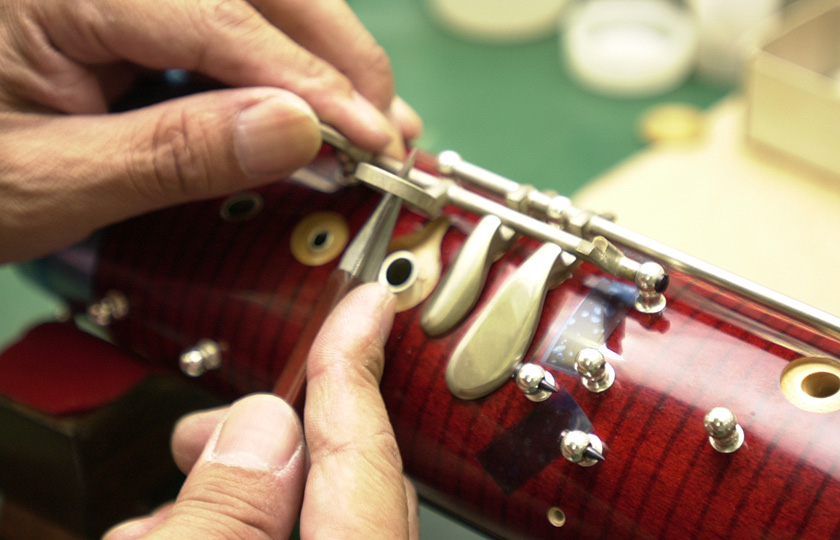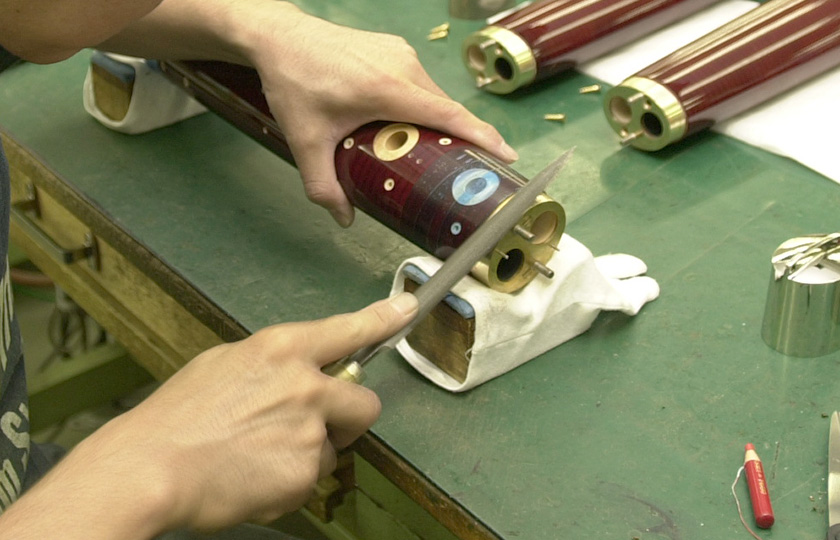How a Bassoon is Made
Tuning during manufacture
Tuning and checking the structure before plating
Bassoons have various parts made of metal. These must be plated, but before this is done there is what could be described as a trial assembly, with the metal parts attached to the body of the bassoon, and their locations checked, before the instrument is tuned. After that, the metal parts are polished with a buffing tool and metal plated, and the locations where they come into direct contact with the instrument's body are padded with felt, cork or other materials.

Trial assembly of metal parts on the instrument body
One of the tools used is a red crayon?
The bottom of the double joint is covered with a protector cap, but this isn't attached with screws or similar fasteners, and instead is just pushed in. If the cap is too loose it may fall out, but conversely if it is too tight it will be impossible to insert fully. If red crayon is applied to the interior of the cap, the crayon gets rubbed onto the double joint at spots where the fit is too tight. This shows where it is necessary to make fine adjustments to the fit, by filing these areas away.

Fine adjustment, filing spots where red crayon can be seen
Musical Instrument Guide : Bassoon Contents
Structure
- What Kind of Musical Instrument is a Bassoon?
- A Long Tube that can be Separated
- The Bocal and its Various Functions
- Unique Features of the bassoon, and How to Play
- [Experiment1]Comparing the Sound of Tone Holes cut Obliquely and Perpendicular
- [Experiment2]Encasing the Bore in Various Materials
- Bonus Experiment
How to Play
How the Instrument is Made
Choosing an Instrument
Trivia
- An Instrument that is Sensitive to Humidity
- Sounds from water in the U-tube?
- There's a needle in the bocal?!
- Comments by conductors caused popularity to tumble?
- Bassoon classics - Chamber music works
- Bassoon classics - Concertos
- Is the "contra-fagotto" a contrabassoon?
- What is the best tool to file a reed?
